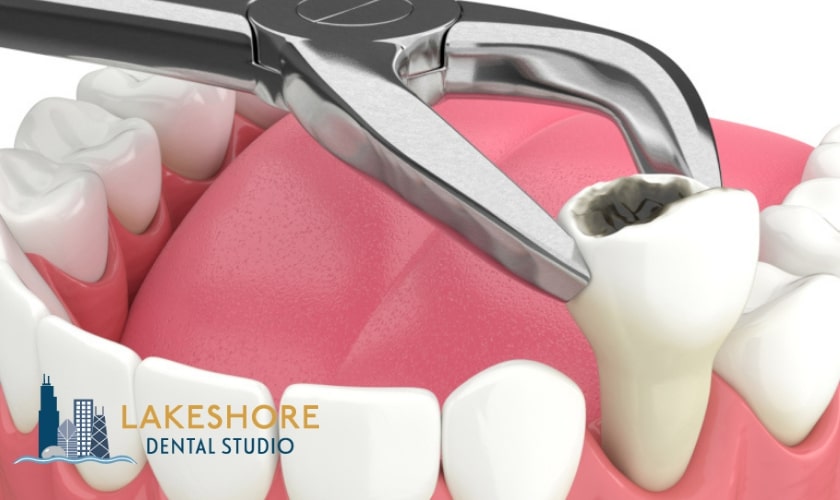A Blood Clot’s Journey: Understanding the Healing Process After Tooth Extraction
Tooth extraction, while necessary at times, can be a daunting procedure. Following the extraction, a crucial step in the healing process involves the formation of a blood clot. This guide explores what a blood clot looks like after a tooth extraction, its significance in healing, and offers tips for a smooth recovery.
The Healing Power of Blood Clots: Nature’s Bandage
After your dentist removes a tooth, a natural response kicks in: your body forms a blood clot in the empty socket (hole) left behind. This clot acts like a natural bandage, serving several important purposes:
- Stops Bleeding: The clot plugs the opening in the socket, preventing further blood loss from the extraction site.
- Protects the Wound: The clot creates a barrier, shielding the underlying bone and nerves from exposure to bacteria in the mouth.
- Promotes Healing: The clot plays a vital role in initiating the healing process. It serves as a scaffold for new tissue growth, allowing the socket to gradually close and heal.
A Visual Guide: What to Expect from Your Blood Clot
The blood clot formed after a tooth extraction will likely appear as a dark red or reddish-brown mass filling the socket. Imagine a wet scab – this is a good comparison for the appearance and texture of the blood clot. Here’s a breakdown of what you might observe:
- Size and Shape: The clot can vary slightly in size and shape depending on the size of the tooth extracted and the amount of bleeding.
- Color: Initially, the clot will appear dark red or reddish-brown. Over a few days, it might turn slightly gray or white as healing progresses.
- Texture: The clot will have a soft, jelly-like texture. Don’t be alarmed by this – it’s a normal characteristic.
Visual Disclaimer: While the clot is visible for a short period, it’s best to avoid excessive inspection of the extraction site. Probing or poking the area can dislodge the clot, which can be quite painful and hinder healing.
The Life Cycle of a Blood Clot: Formation, Dissolution, and Healing
The blood clot follows a specific timeline after tooth extraction:
- Formation: Within the first few hours after the extraction, a blood clot forms in the socket.
- Dissolution: Over the next few days, the clot gradually starts to dissolve as the healing process progresses. This is a natural process, allowing new tissue to form and fill the socket.
- Healing: As the clot dissolves, new tissue, including bone and granulation tissue (a type of tissue rich in blood vessels and collagen), starts to fill the socket. This process typically takes several weeks.
Safeguarding the Clot: Ensuring a Smooth Recovery
Here are some crucial tips to promote healing and prevent complications related to the blood clot:
- Follow Your Dentist’s Instructions: Your dentist will provide specific post-extraction care instructions. This might include avoiding strenuous activity, using a cold compress to reduce swelling, and following a soft food diet.
- Minimize Discomfort: Over-the-counter pain medication can help manage any discomfort after the extraction.
- Resist the Urge to Poke or Prod: Leave the clot alone! Avoid touching or poking the extraction site with your tongue, fingers, or any objects. This can dislodge the clot and cause renewed bleeding and pain.
- Gentle Rinsing: After the first 24 hours, you can gently rinse your mouth with warm salt water (dissolve half a teaspoon of table salt in a glass of warm water) several times a day. This helps remove food particles and promotes healing but avoid forceful rinsing that could dislodge the clot.
When to Seek Help: Potential Complications
While the formation and dissolution of the blood clot are normal parts of healing, some situations require immediate attention from your dentist:
- Severe or Persistent Bleeding: If you experience excessive bleeding that doesn’t subside after applying gentle pressure for 10 minutes, contact your dentist right away.
- Visible Pus or Foul Odor: If you notice pus draining from the extraction site or a foul odor develops, it might indicate an infection.
- Prolonged Pain: While some discomfort is expected, severe or worsening pain after a few days might signify a complication.
- Dislodged Clot: If the blood clot comes loose prematurely, causing a visible empty socket and intense pain, contact your dentist immediately. This is known as dry socket, a condition requiring prompt treatment.

